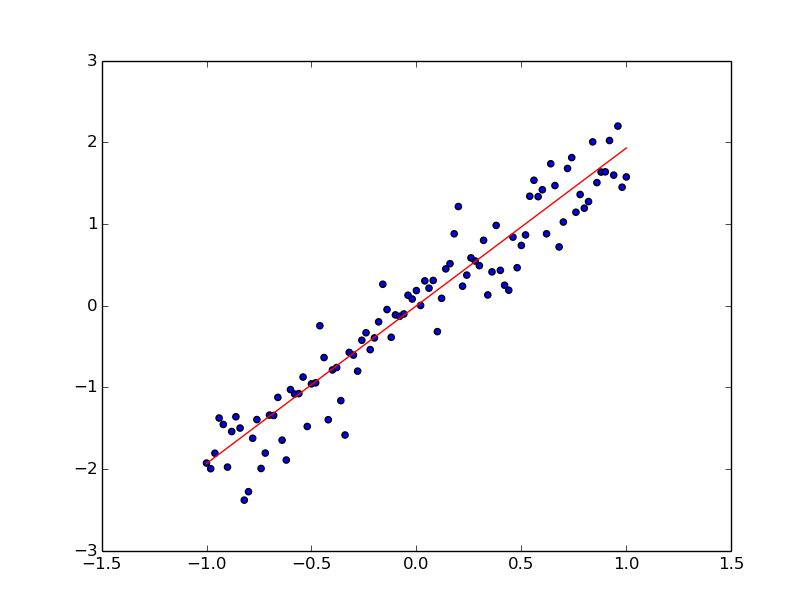使用tensorflow做线性回归
程序运行结果如下图:
实验代码:
#!/usr/bin/env python
import tensorflow as tf
import numpy as np
import matplotlib.pyplot as plt
# 生成101组二维训练数据
trX = np.linspace(-1, 1, 101) #创建-1到1之间的一维等差数组
trY = 2 * trX + np.random.randn(*trX.shape) * 0.33 # 目标函数为y=2x,并施加一个高斯分布的噪音
X = tf.placeholder("float") #创建占位符
Y = tf.placeholder("float")
def model(X, w):
return tf.mul(X, w) # 线性回归模型:x与w的内积
w = tf.Variable(0.0, name="weights") # 为模型权重W创建共享变量
y_model = model(X, w)
cost = tf.square(Y - y_model) # 定义平方损失函数
train_op = tf.train.GradientDescentOptimizer(0.01).minimize(cost) #使用步长为0.01的梯度下降算法,最小化损失函数cost
# 创建会话
with tf.Session() as sess:
# 初始化变量W
tf.initialize_all_variables().run()
for i in range(100):
for (x, y) in zip(trX, trY):
sess.run(train_op, feed_dict={X: x, Y: y})
weight = sess.run(w)
print(weight) #输出训练完成的权重w,结果应接近2
#画图
fig = plt.figure()
ax1 = fig.add_subplot(111)
xx = np.linspace(-1, 1, 101)
yy = xx*weight
ax1.scatter(trX ,trY)
plt.plot(xx,yy,"r")
plt.show()






















 426
426











 被折叠的 条评论
为什么被折叠?
被折叠的 条评论
为什么被折叠?








